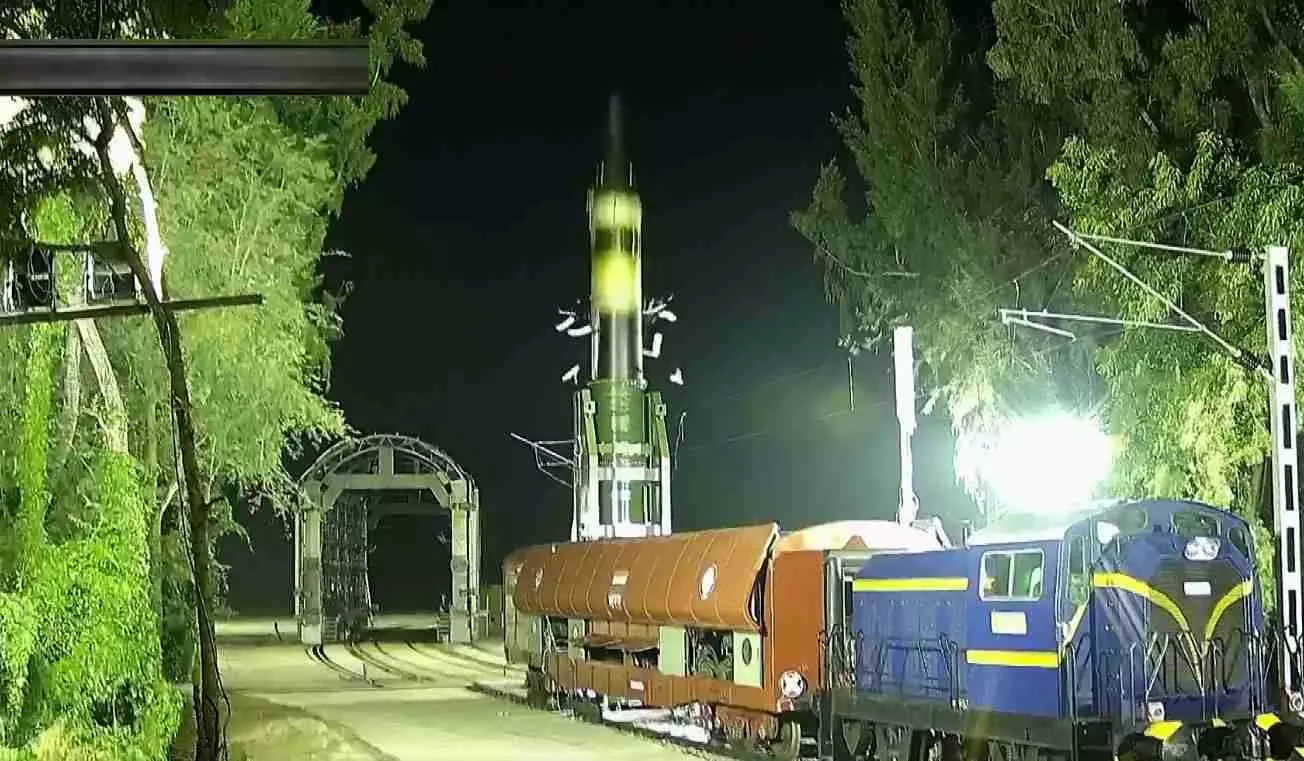
Seven reasons why Agni-Prime missile test-firing is significant for India
The 2,000-km range IRBM was launched from a rail-based mobile system, putting India in a select group of nations with this rapid deployment capability

India on Wednesday (September 24) successfully test-fired the Agni-Prime missile from a rail-based mobile launcher system, demonstrating its capability to deploy the missile across the country.
This is the sixth missile in the Agni series, which has nuclear capabilities. The Agni-Prime missile is a solid-propellant intermediate-range ballistic missile (IRBM) with a range of 2,000 km, which covers China and Pakistan. The “road mobile” variant of Agni-Prime has already been inducted into the services after a series of successful flight trials.
While the location of test-firing the weapon system was not disclosed, the missile trajectory was reportedly tracked by various ground stations.
Also read: India successfully tests Agni-Prime missile from rail-based mobile launcher
This test-firing — which came over four-and-a-half-months after the four-day military conflict between India and Pakistan — put India in a select group of nations, including the US, Russia, and China, with the capability to launch a canisterized missile system from a railway network.
Here are seven reasons why the Agni Prime missile launch is significant:
1. Advantage Indian Armed Forces
This is the first test firing of India’s nuclear-capable IRBM from a mobile rail-based system. This capability enhances the survivability and mobility of India’s strategic assets and ensures their rapid deployment.
2. Operational advantages
The successful test-firing demonstrates several key operational advancements. The specially-designed rail-based mobile launcher can move on rail network without any pre-conditions. The canisterised system allows the missile to be stored for extended periods and launched with a short reaction time from multiple locations across the country.
3. Better retaliation abilities
The rail-based mobile launcher significantly enhances India’s ability to retaliate after a nuclear attack, also known as a “second-strike capability”.
Also read: India successfully test-fires Agni 5 missile in Odisha
4. Mobility and flexibility
The ability to deploy from anywhere on the rail network provides unprecedented mobility and flexibility for India’s strategic weapons. The Indian Armed Forces can now launch the missile from any part of the country with a railway network, which now connects many parts of the North East and the Himalayan region to the rest of the country.
The figure from March last year says that the Indian Railways, with nearly 70,000 km of tracks, is the fourth-largest railway network in the world. However, several strategic locations, especially in the North East (China border) and in Kashmir and Ladakh (China and Pakistan borders) are still out of the railway network.
5. Difficult to target
Fixed missile silos are high-priority targets for enemy nations during a conflict. By being able to move the missile across India’s extensive railway network, it becomes far more difficult for an enemy to track and target the system. However, rail tracks themselves can be vulnerable to sabotage, which could be a big concern, especially in the time of war.
Also read: India fires off nuclear-capable strategic Agni Prime missile
6. Greater concealment
A rail-based launcher can hide in plain sight or in tunnels, making its location difficult to detect via satellite surveillance.
7. Independent system
According to the defence ministry, the missile is equipped with all independent launch capability features, including state-of-the-art communication systems and protection mechanisms, requiring minimal external support.

